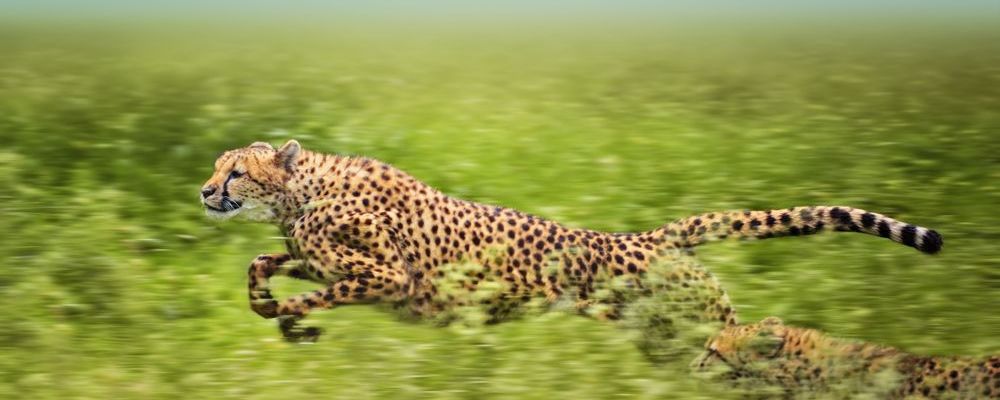Here’s a thought to ponder, and some supposition about how some animals may operate. The reason we still have antelopes and gazelles is that, in addition to being able to reach very high speeds, they have the ability to change direction rapidly, almost instantaneously. This gives them the dual advantage over most predators, of pace and manoeuvrability.
Enter the cheetah.
When it comes to competitive advantage, few animals can match the cheetah. Faced with a prey that can run at up to 100kph, the cheetah has developed characteristics that enable it to survive by catching that prey.
The first is speed – the cheetah is the fastest land animal alive, and can reach speeds of up to 120kph. However, whilst powerfully impressive, speed is a necessary yet not sufficient condition. What gives this majestic predator the ability to chase and catch antelope or gazelle is its second characteristic – the ability to pivot at top speed to match the agility of the prey.
And that’s not all. Matching or even slightly exceeding the pace, and matching the manoeuvrability of its prey would still leave the cheetah with an advantage so marginal as to be unsuccessful too often. What really makes the difference is data.
As with every predator, the cheetah learns that there is a limit to the agility of the prey. Following with intense concentration, time after time, the cheetah learns from tiny, subliminal movements in the prey, which manoeuvre will come next – pivoting left or right, leaping up or down, accelerating ahead or swerving. Processing these movements enables the cheetah to predict, based on its acquired database of gazelle movements, what the prey will do next. And the cheetah, armed with that knowledge, can move first, so that when the gazelle pivots, the cheetah can be ‘there, waiting for it’.
I call this ‘Pre-emptive agility’.
Of course, success doesn’t happen every time for the cheetah. Most chases fail. Yet ‘sometimes it's often enough to maintain the population of predators and prey at a sustainable level.
The lesson from this for competitive advantage is threefold.
Firstly, the purpose of data acquisition is to change our behaviour – to some, that sounds extreme, yet we too often forget it. Secondly, we don’t have to predict far ahead based on our data – just enough to keep us ahead of our competition, even fractionally. And thirdly, our interpretations of data must enable us to act swiftly and decisively. Data is not mere information – to be effective, we must use data as a prompt for action.
For the cheetah and the gazelle, agility is not merely ‘competitive advantage’ – it is a matter of life or death.
In the markets in which we operate, ‘pre-emptive agility’ is the capacity for swift proactive behaviour change based on accurately interpreted data. This may not be life or death – but it could certainly be the difference between growth and decline.

